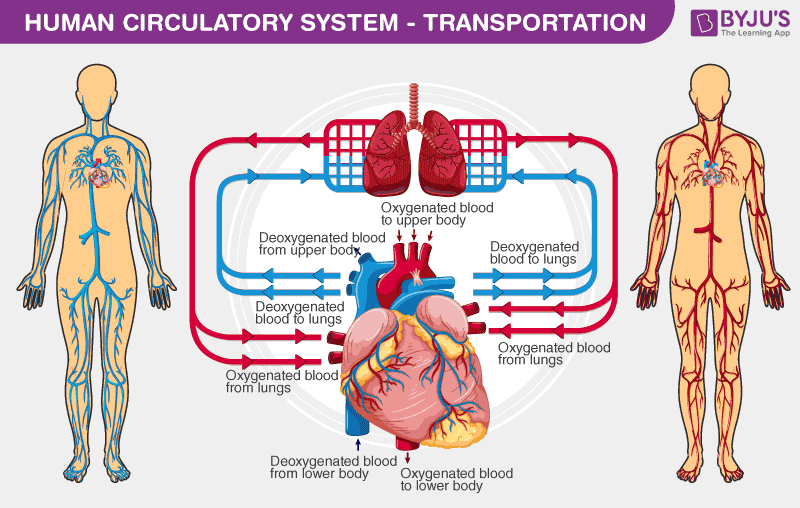A disorder is defined as a state of irregular functioning of the body. The disorders of the circulatory system could be defined as any ailment which affects the heart, blood vessels, and the blood cells. This disorder leads to the insufficient or reduced transportation of blood, oxygen, hormones, and nutrients to the tissue and cells.
Example: High Blood Pressure. Let us take an overview of disorders of the circulatory system.
Example: High Blood Pressure.
Let us take an overview of disorders of the circulatory system.
Circulatory System

The circulatory system may be defined as the system which is involved in the circulation of lymph and blood throughout the body. The circulatory system consists of many parts like heart, blood vessels, blood cells, lymph, lymphatic vessels, and glands. This disorder may be affected by the following factors:
- An emotional response to distressing events like an accident.
- Blockage of a blood vessel.
- Formation of tumours in blood vessels.
- Reduction in the artery diameter.
Types of Disorders in the Circulatory System
- High Blood Pressure
The pressure which is created by the blood flow on the wall of blood vessels. In humans, the normal range of blood pressure is 120/80. In this range, 120 is the systolic blood pressure and 80 is the diastolic blood pressure.
Systolic blood pressure – It is defined as the pressure that is created in the arteries when blood flows through arteries to the rest of the body when the heartbeats.
Diastolic blood pressure– It is defined as the pressure created in the arteries when the heart relaxes between the beats.
If the normal blood pressure is higher than 140 over 90 or higher, it leads to hypertension. It has no signs and symptoms.
Hypertension may lead to heart diseases and improper functioning of some organs like brain and kidney. High blood pressure may be caused by the following factors:
High blood pressure could be caused by the following factors:
- Intake of salty foods.
- Intake of too much alcohol.
- Intake of large amounts of fat-rich foods.
Also Read: Hypertension
- Coronary Artery Disease (CAD)
Coronary artery disease is also termed as atherosclerosis. Coronary Artery Disease is the disease which is caused by the deposition of waxy substances in the blood vessels which supplies the blood to the heart muscle and this deposition leads to the blockage of the blood flow. The examples of waxy substances are fat, cholesterol and fibrous tissues. As a result, it may also cause a heart attack.
Coronary Artery Disease (CAD) could be caused by the following factors:
- Smoking.
- High blood pressure.
- High cholesterol.
- Diabetes or insulin resistance.
- Angina

Angina is the condition in which chest pain occurs if the heart receives insufficient oxygen and nutrients through the blood vessels. Angina could be caused by the different risk factors. These factors are as follows:
- Smoking.
- Age factor (More than 40 age).
- Hypertension.
- Obesity.
- Physical inactivity.
- Heart Failure
Heart failure may be defined as a chronic condition when the heart doesn’t pump sufficient blood to the tissue cells in the body. It is sometimes known as congestive heart failure because the main symptom of heart failure is lung congestion.
Heart failure may be caused by the following risk factors:
- Smoking.
- Obesity.
- Intake of fat-rich food.
To learn more about these disorders of the Circulatory System, and other related topics, visit Byju’s Biology.

wonderful you the best